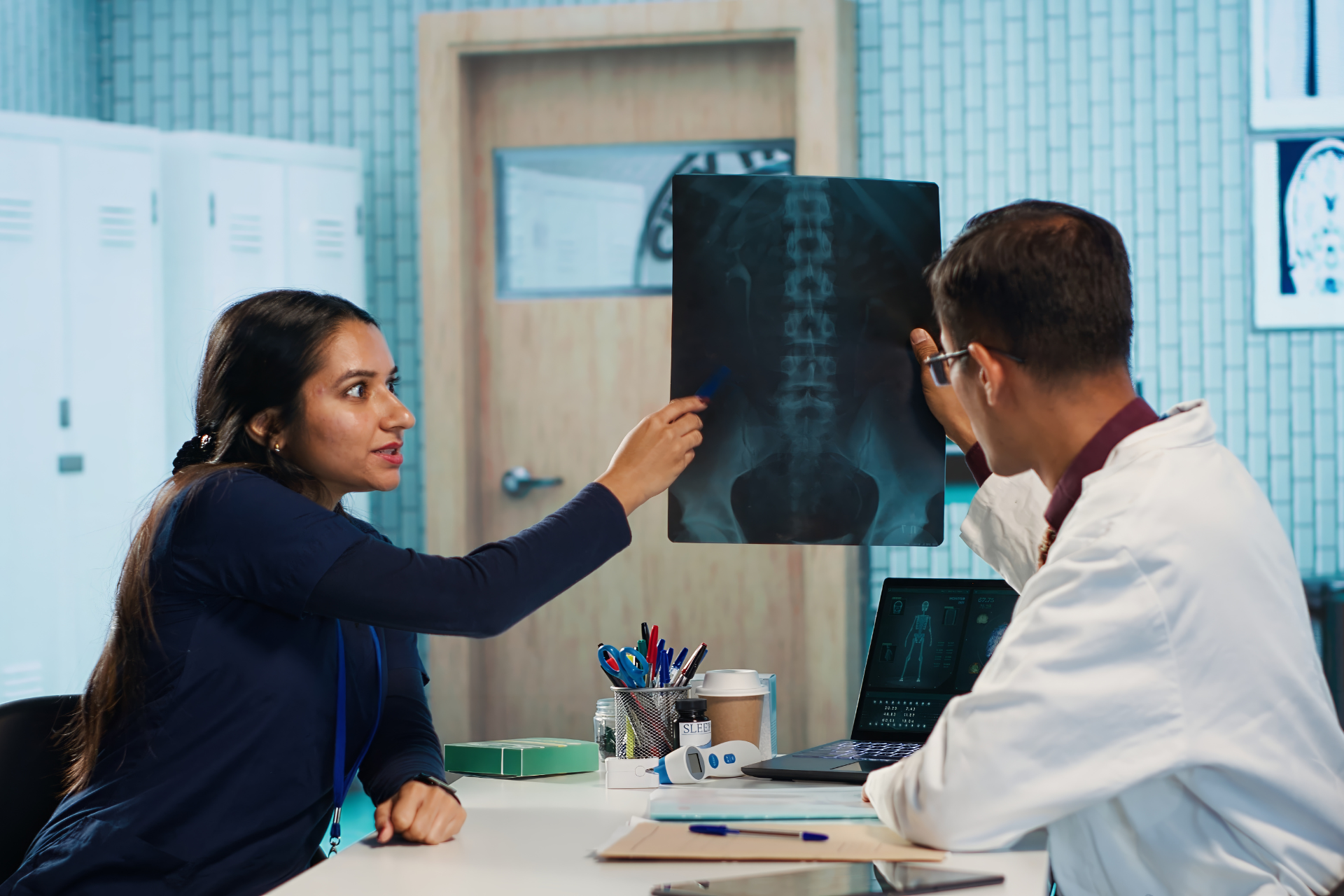Blog Details

What is Scoliosis?
Scoliosis is more than just poor posture — it’s a structural condition where the spine develops an abnormal “S” or “C” shaped curve. This can occur during growth spurts in adolescence, due to degenerative changes in adults, or as a result of neuromuscular conditions.
Non-Surgical Treatment Options
Non-surgical approaches are usually recommended for mild to moderate scoliosis or when surgery is not immediately necessary. These include:
1. Observation & Monitoring
For children or teenagers with mild scoliosis, doctors often recommend regular check-ups every 6–12 months to track the curve’s progression
2. Physiotherapy & Exercise
Specialized physiotherapy exercises (like the Schroth method) help strengthen muscles, improve posture, and reduce discomfort. Consistent therapy can improve spinal alignment and quality of life.
3. Bracing
In growing children and adolescents, spinal braces can prevent further progression of the curve. While they don’t “cure” scoliosis, braces play a key role in managing spinal growth effectively.
4. Pain Management
Non-surgical pain-relief options may include medications, lifestyle modifications, posture correction, and targeted exercises.
Surgical Treatment Options
Surgery is recommended when scoliosis curves are severe (usually over 40–50 degrees), rapidly progressing, or causing significant pain and functional issues.
1. Spinal Fusion Surgery
The most common scoliosis surgery, spinal fusion, involves connecting vertebrae with rods, screws, and bone grafts to prevent further curvature. It helps stabilize the spine and corrects deformity.
2. Minimally Invasive Techniques
Advancements in spine care now allow for less invasive surgical options. These procedures reduce recovery time, minimize scarring, and are especially beneficial for adults with degenerative scoliosis.
3. Growth-Friendly Implants (for Children)
For young patients whose spines are still developing, specialized implants allow spinal growth while correcting the curve.
Why Choose India for Scoliosis Treatment?
India has emerged as a hub for advanced spine care due to:
- Expert spine surgeons trained internationally
- Modern techniques including minimally invasive and robotic-assisted surgeries
- Affordable healthcare costs compared to global standards
- Comprehensive rehab programs for long-term recovery
Takeaway
Scoliosis treatment in India offers a balanced approach — from careful monitoring and non-surgical therapies to advanced surgical options when needed. The right treatment depends on age, severity of the curve, and overall health. Early diagnosis and timely care are crucial to prevent progression and ensure a better quality of life.